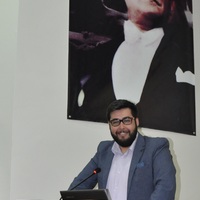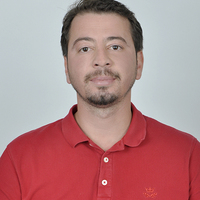
SİNEM AKMAN
Okan University Gastronomy Master, İstanbul Arel University Academician
less
Related Authors
nihan yarmacı
Gedik University
Almaz Sandybayev
University of Mediterranean Karpasia
Eren Yalçın
Selcuk University (Selçuk Üniversitesi)
Osman GÜLDEMİR
Anadolu University
Mustafa ÜLKER
Erciyes University
OZAN GULER
Mersin University
InterestsView All (20)









Uploads
Papers by SİNEM AKMAN
Bir yöredeki coğrafi koşullar; toprağın yapısı, suyu, iklimi, bitki örtüsü,
ormanları, akarsuları o yörede yetişen ürünleri etkilemektedir. Elde edilen
ürünlerin niteliği de mutfak kültürüne yansımaktadır. Bitki örtüsünün farklı
oluşu yörede yapılan hayvancılıkta da etkisini göstermektedir. Tekirdağ, her
çeşit tahılın yetişmesine uygun bir iklime sahiptir. Tekirdağ İli gastronomik
değeri olarak kabul edilen “Tekirdağ Köftesi” Tekirdağ’da yetişen hayvanların
etleri kullanılarak hazırlanmaktadır. Bu durum da; lezzeti ve yapımı ile kişilerin
zihninde etki yaratmaktadır. Tekirdağ’a, Tekirdağ köftesi yemek için gelen
kişilerin turizm faaliyetine katılmaları için şehirdeki turizm çekiciliklerinin
arttırılmasına yönelik yapılması gerekenler araştırılmaktadır. Çalışmada yarı
yapılandırılmış derinlemesine mülakat tekniği uygulanmıştır. Yarı
yapılandırılmış derinlemesine mülakat tekniğinde; köfte imal eden işletmeler,
turizm işletmeleri olarak faaliyet gösteren otel işletmeleri, seyahat acentaları ve
yerli yabancı Tekirdağ’a gelen turistler ile görüşülmüştür. Üç grup soru
sorulmuştur. Frekans analizi ve fark analizi ile bulgular paylaşılmaktadır.
Çalışmada, Tekirdağ Köftesi’nin ulusal ve uluslararası tanınırlığının ve
bilinirliğinin artması sağlanmaktadır. Ayrıca; Tekirdağ Köftesi’nin turizm
değerine dönüşmesi ile destinasyon pazarlamasında turizm açısından, İl’e katkı
sağlayıp sağlamadığı ortaya konulmaktadır.
ABSTRACT
Geographical conditions in a locality; soil structure, water, climate, vegetation,
forests, streams affect the products grown in that region. The nature of the
products is also reflected in the culinary culture. Different vegetation shows the
effect of animal farming in the region. Tekirdağ has a climate suitable for the
cultivation of all kinds of grains. “Tekirdağ Meatball” which is accepted as the
gastronomic value of Tekirdağ Province, is prepared by using the meats of the
animals grown in Tekirdağ. In this case; taste and construction make people's
minds. People who come to Tekirdağ to take part in tourism activities
investigated in order to increase their tourism attractiveness.
In this study, semi-structured in dept interview technique was used. Semistructured
in-depth interview technique; the companies that produce meatballs,
the hotel enterprises operating as tourism enterprises, travel agencies and
domestic tourists negotiated with tourists coming to Tekirdağ. Three groups of
questions asked. Findings shared with frequency analysis and difference
analysis. The recognition of the Tekirdağ Köftesi's national and international
recognition and recognition ensured. Also; With the transformation of Tekirdağ
Meatball into a tourism value, it revealed whether it contributes to the province
in terms of tourism in destination marketing.
ABSTRACT Halva derived from Hulv, which means Arabic dessert, is a food that has always attracted attention in the Turkish society. Physiologically, people need sweets to increase their energy as well as the need to eat. In addition to meeting this requirement with fruit, they also meet the needs of baked goods or pastries. Halva has a special importance in the Ottoman Empire as a floury dessert.When looking at Evliya Çelebi travel sourcing and sources of Ottoman cuisine, the word halva is used for floury/ starchy, oily, honeyed or sugary desserts. Halva was accepted in the Ottoman palace kitchen and named the place where it was made. In the palace, the place called as Helvahane, formerly known as Matbah-ı Amire, is known as the place where the desserts are made, as well as the halvah. In the journey of human beings from birth to death in different cultures, halva has a sacred meaning. In this study, halva, which has come from past to present as a cultural heritage and is included in culinary culture, is investigated. The importance of the Helva of "Helva-i Gaziler" among the halva varieties, the place in the society and the difference from the other halves will be transferred.
Bir yöredeki coğrafi koşullar; toprağın yapısı, suyu, iklimi, bitki örtüsü,
ormanları, akarsuları o yörede yetişen ürünleri etkilemektedir. Elde edilen
ürünlerin niteliği de mutfak kültürüne yansımaktadır. Bitki örtüsünün farklı
oluşu yörede yapılan hayvancılıkta da etkisini göstermektedir. Tekirdağ, her
çeşit tahılın yetişmesine uygun bir iklime sahiptir. Tekirdağ İli gastronomik
değeri olarak kabul edilen “Tekirdağ Köftesi” Tekirdağ’da yetişen hayvanların
etleri kullanılarak hazırlanmaktadır. Bu durum da; lezzeti ve yapımı ile kişilerin
zihninde etki yaratmaktadır. Tekirdağ’a, Tekirdağ köftesi yemek için gelen
kişilerin turizm faaliyetine katılmaları için şehirdeki turizm çekiciliklerinin
arttırılmasına yönelik yapılması gerekenler araştırılmaktadır. Çalışmada yarı
yapılandırılmış derinlemesine mülakat tekniği uygulanmıştır. Yarı
yapılandırılmış derinlemesine mülakat tekniğinde; köfte imal eden işletmeler,
turizm işletmeleri olarak faaliyet gösteren otel işletmeleri, seyahat acentaları ve
yerli yabancı Tekirdağ’a gelen turistler ile görüşülmüştür. Üç grup soru
sorulmuştur. Frekans analizi ve fark analizi ile bulgular paylaşılmaktadır.
Çalışmada, Tekirdağ Köftesi’nin ulusal ve uluslararası tanınırlığının ve
bilinirliğinin artması sağlanmaktadır. Ayrıca; Tekirdağ Köftesi’nin turizm
değerine dönüşmesi ile destinasyon pazarlamasında turizm açısından, İl’e katkı
sağlayıp sağlamadığı ortaya konulmaktadır.
ABSTRACT
Geographical conditions in a locality; soil structure, water, climate, vegetation,
forests, streams affect the products grown in that region. The nature of the
products is also reflected in the culinary culture. Different vegetation shows the
effect of animal farming in the region. Tekirdağ has a climate suitable for the
cultivation of all kinds of grains. “Tekirdağ Meatball” which is accepted as the
gastronomic value of Tekirdağ Province, is prepared by using the meats of the
animals grown in Tekirdağ. In this case; taste and construction make people's
minds. People who come to Tekirdağ to take part in tourism activities
investigated in order to increase their tourism attractiveness.
In this study, semi-structured in dept interview technique was used. Semistructured
in-depth interview technique; the companies that produce meatballs,
the hotel enterprises operating as tourism enterprises, travel agencies and
domestic tourists negotiated with tourists coming to Tekirdağ. Three groups of
questions asked. Findings shared with frequency analysis and difference
analysis. The recognition of the Tekirdağ Köftesi's national and international
recognition and recognition ensured. Also; With the transformation of Tekirdağ
Meatball into a tourism value, it revealed whether it contributes to the province
in terms of tourism in destination marketing.
ABSTRACT Halva derived from Hulv, which means Arabic dessert, is a food that has always attracted attention in the Turkish society. Physiologically, people need sweets to increase their energy as well as the need to eat. In addition to meeting this requirement with fruit, they also meet the needs of baked goods or pastries. Halva has a special importance in the Ottoman Empire as a floury dessert.When looking at Evliya Çelebi travel sourcing and sources of Ottoman cuisine, the word halva is used for floury/ starchy, oily, honeyed or sugary desserts. Halva was accepted in the Ottoman palace kitchen and named the place where it was made. In the palace, the place called as Helvahane, formerly known as Matbah-ı Amire, is known as the place where the desserts are made, as well as the halvah. In the journey of human beings from birth to death in different cultures, halva has a sacred meaning. In this study, halva, which has come from past to present as a cultural heritage and is included in culinary culture, is investigated. The importance of the Helva of "Helva-i Gaziler" among the halva varieties, the place in the society and the difference from the other halves will be transferred.